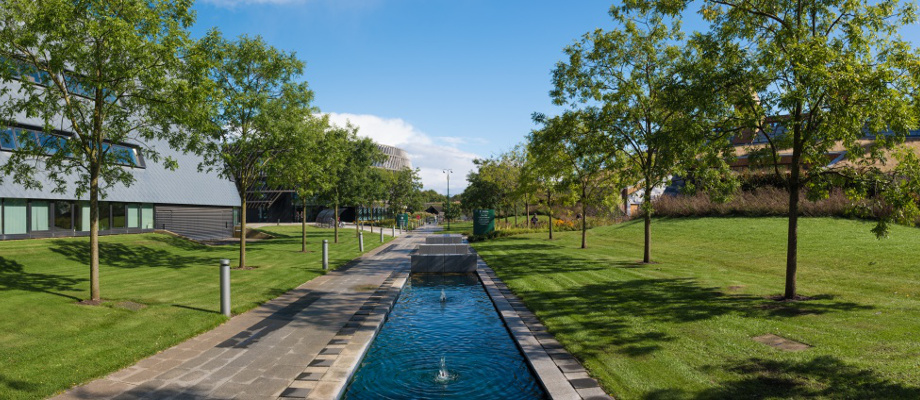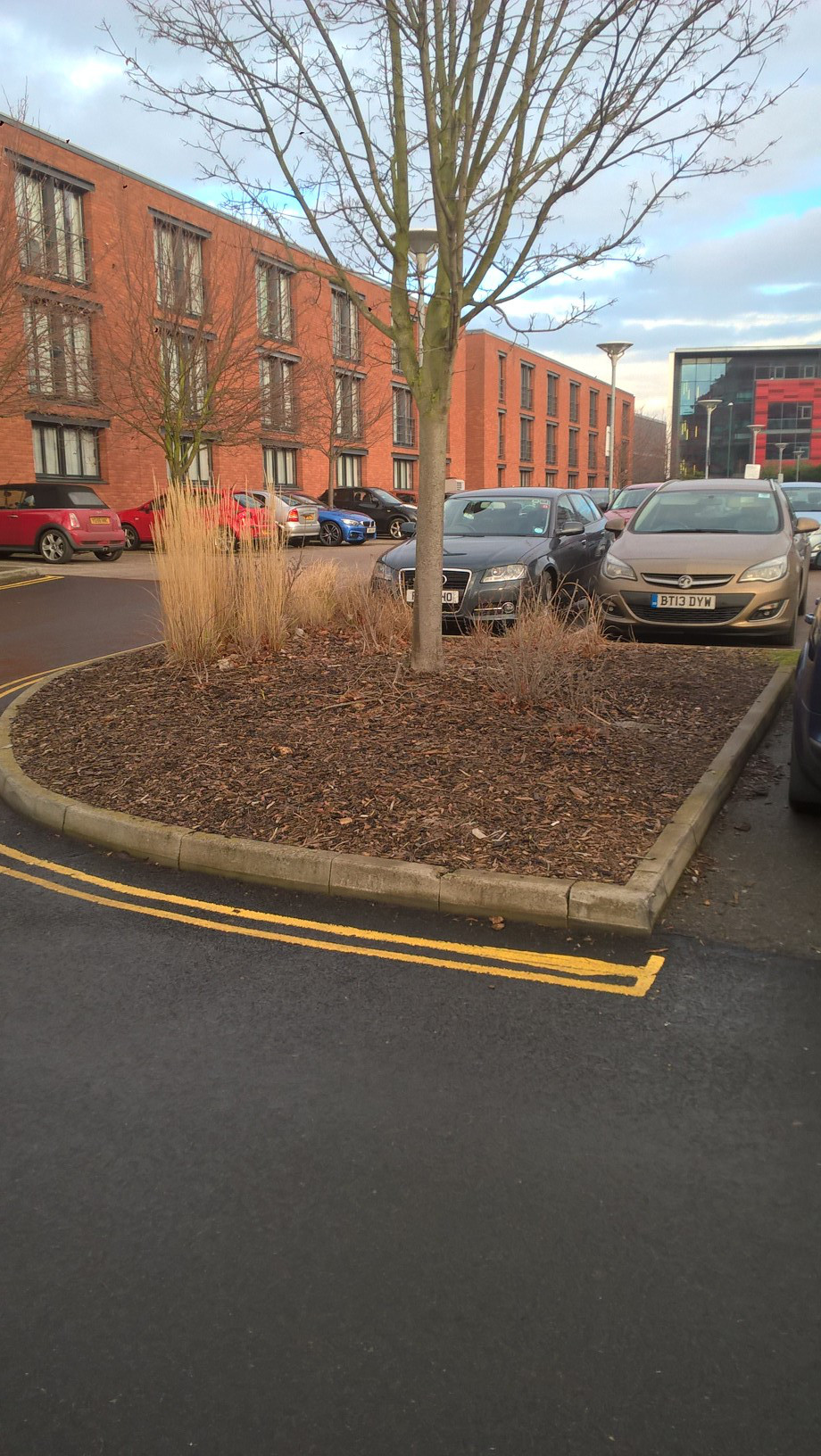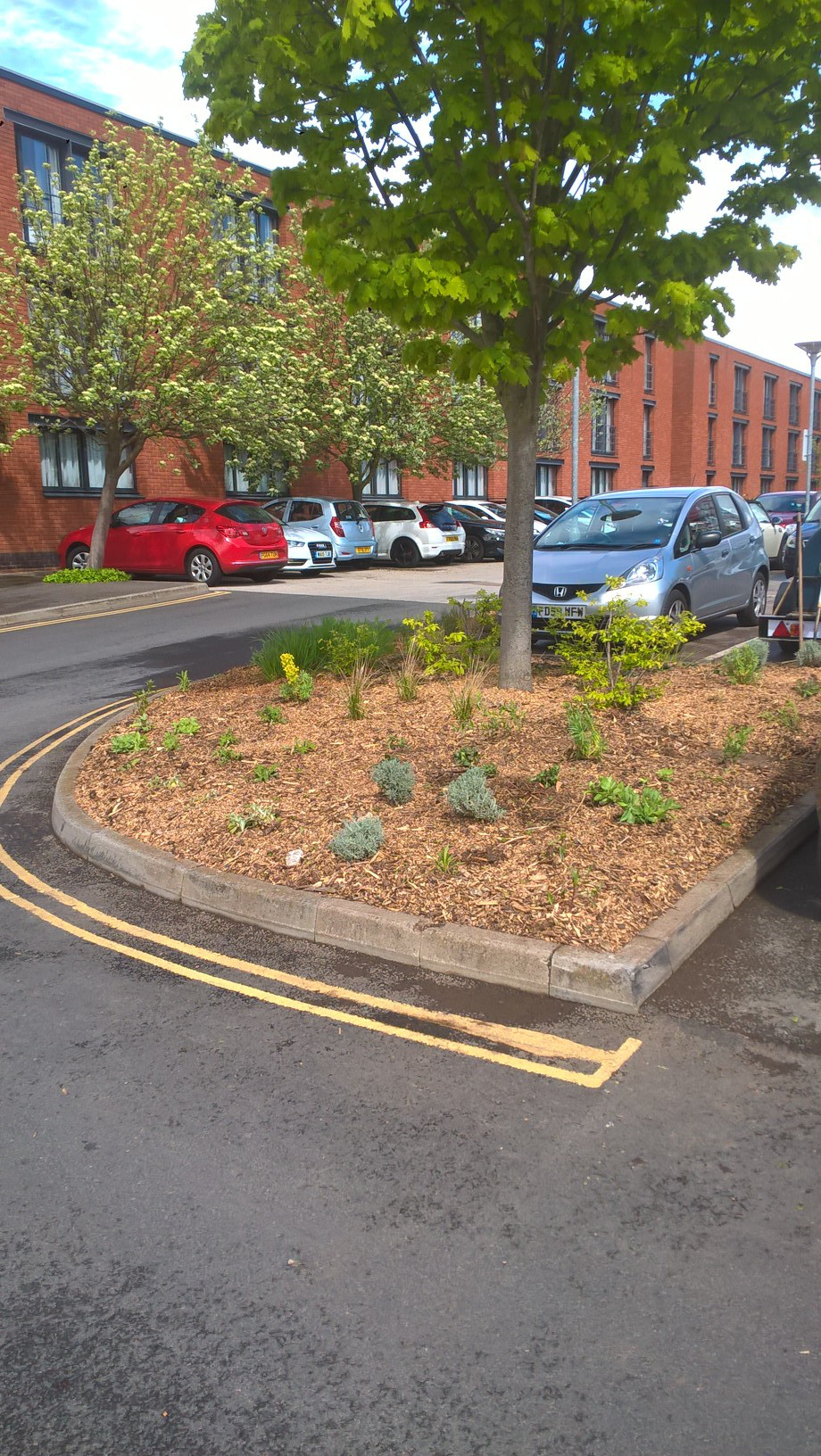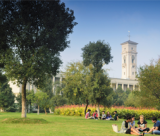
The Jubilee Campus Grounds Team carries out sustainable spring planting
June 24th, 2019
The Jubilee Campus Grounds Team have designed sustainable planting for small areas around the grounds that are usually left bare.
Jubilee campus is now 20 years old and was designed with sustainability in mind. The sustainable planting this spring was designed by Jubilee Grounds Team Leader, Matthew Gyles, and procurement of plants was carried out by Assistant Grounds Maintenance Manager, Lee Reed.
The new plants will attract insect pollinators, such as bees and pollen wasps, and will not require additional irrigation once they are established as they rely solely on rainwater. In addition to this, the plant bed has been mulched with material produced on campus, such as bark chips, to retain soil moisture, regulate soil temperature and suppress weed growth, therefore eliminating the need for chemical weed killers.
One of these areas can be found by Newark Hall car park, which is a challenging location for plants. The environment for plants in roadside beds can be harsh as they must tolerate exposure to salt from gritting in the winter, and in the summer months the surrounding concrete and tarmac retains heat, increasing an already high air temperature. A roadside bed surrounded by kerbs is also unlikely to receive any run off water due to the barrier created by the kerb, so will receive only the rain that falls directly onto the bed.
The height and spread of the plants are very important considerations for a bed near a road junction as ‘lines of sight’ need to be maintained. Important design considerations include seasonal colour and plants with a range of heights and spreads to give depth and variety to the plant bed.
The team chose a selection of coastal, drought-tolerant and pollinator-friendly plants such as Eryngium, otherwise known as Sea Holly, and Perovskia Blue Spire, or Russian Sage.
The full plant list and characteristics are listed below.
| Name | Drought tolerant | Coastal | Pollinator |
| Calamagrostis acutiflora | Yes | ||
| Echinops ritro | Yes | Yes | |
| Erigeron | Yes | Yes | |
| Eryngium variifolium | Yes | Yes | Yes |
| Euphorbia characias | Yes | Yes | |
| Panicum virgatum | Yes | ||
| Perovskia Blue Spire | Yes | Yes | Yes |
| Santolina chamaecyparissus | Yes | Yes | |
| Sedum spectabile | Yes | Yes | |
| Stachys byzantia | Yes | Yes |
The plants chosen are largely flowering perennials with grasses, Calamagrostis and Panicum, to give height and movement. These are all readily available at local nurseries and garden centres, so easily accessible to anyone with a dry, sunny flowerbed or a border requiring new plants.
Newark Hall plant bed before:

Newark Hall plant bed after:

For more information about the University’s grounds and gardens, visit https://www.nottingham.ac.uk/sustainability/grounds/groundsgardens.aspx.
Tags: Grounds team, Jubilee Campus, sustainability
2 Comments
Leave a Reply
Other News

University of Nottingham Online discovery webinars
University of Nottingham Online (UoNO) is here to help colleagues across the university who want to […]

University of Nottingham China celebrates 20 years
At the University of Nottingham, we embrace diversity in culture, spirit and thinking. It’s why we […]


June 25th, 2019 at 9:57 am
Stephanie Holmes
Great work and a great article – I always admire the grounds on our campuses and as a keen gardener it’s a bonus to get details of the plants used and take recommendations for my own garden. Thank you! 🙂
June 28th, 2019 at 9:46 am
Elaine
How refreshing, also, to see the drought tolerant plants which have been subjected to excessive rainfall recently, being watered so diligently this morning 🙂